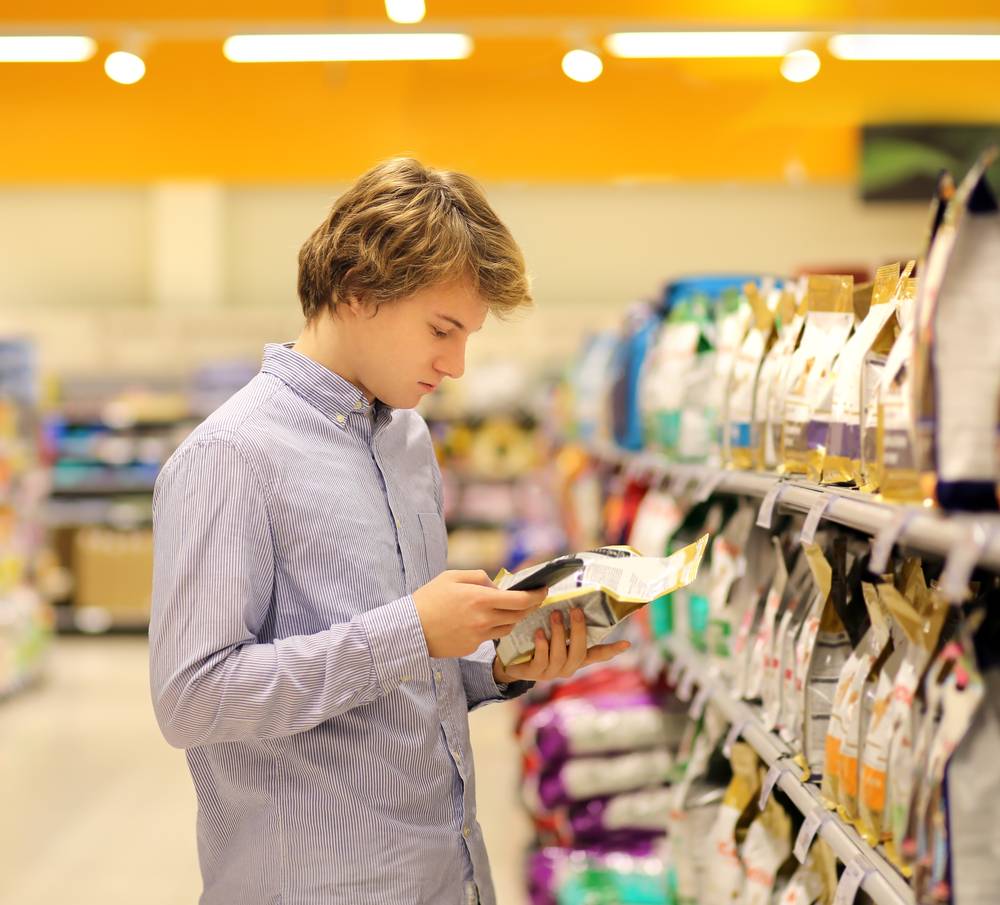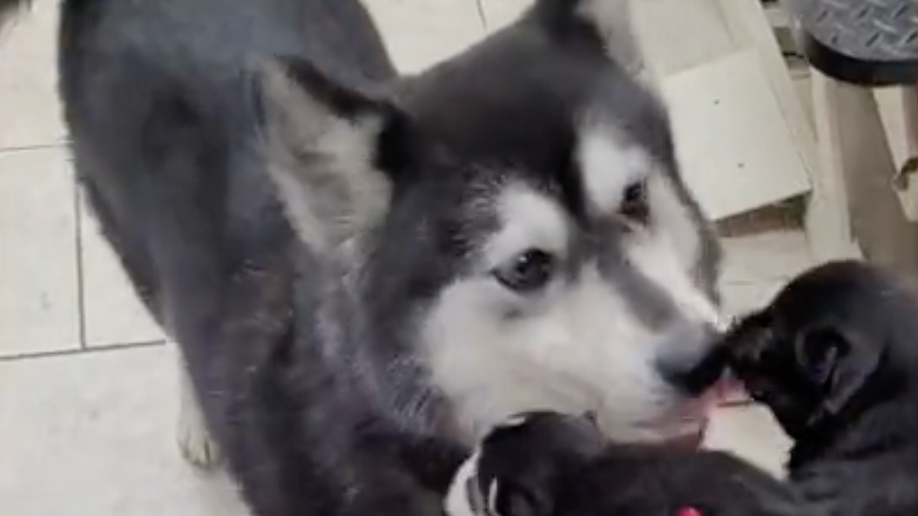[ad_1]
Summary:
In Europe alone, pet food trade body FEDIAF estimates pet food now has an annual turnover of €21.8bn (£18.7m) A Mondi Dow Premium survey found that 77% of pet owners considered clear nutritional information on packaging to be very important. Low migration inks make up over 30% of all packaging inks used today.
The post-pandemic market has seen the global pet and animal care sectors grow rapidly. In Europe alone, pet food trade body FEDIAF estimates pet food now has an annual turnover of €21.8bn (£18.7m). Brands now have more opportunities than ever to connect with a booming, enthusiastic consumer base, but this is a double-edged sword – competition for share of voice is stiffer than ever.
Perhaps the defining trend of the current pet care sector is the humanization of pets, which is driving growth in all directions. In particular, consumers are growing increasingly discerning about what they feed to their ‘fur babies. A Mondi Dow Premium survey found that 77% of pet owners considered clear nutritional information on packaging to be very important.
Providing packaging that not only looks and feels premium but also informs consumers and protects pets, should be top of the agenda for converters and brands. This is why labeling that over-delivers in every area has never been more important.
Safe labeling
With consumers more informed than ever about pet safety and nutrition, the most important thing brands and converters in this sector can do is make sure their packaging is safe. Before the visual design of labeling is settled, converters should make use of a labeling expert who can ensure the materials used are optimal for pet food packaging. The use of Good Manufacturing Practices (GMP) should be a given. However, as consumers now expect human food-grade packaging from their pet food, converters must go further to ensure their offering can keep up with market trends.
Employing a labeling partner that uses low-migration inks is one way that converters can ensure safety in labeling. Migration is when chemicals from the ink make their way onto the food itself. This can occur at almost any stage of the production or post-production process. The only way to prevent this is to use low-migration inks. These inks are made with materials that have a higher molecular weight, meaning they do not transfer through substrates as easily.
This sort of attention to detail is something consumers are growing to expect, particularly when it comes to issues of safety. Brands will be aware consumers value premium, nutritious, and safe food for their pets. Claims to this effect can be quick – and expensively – undermined by inferior labeling technology that leaves food at risk of contamination.
Low migration inks should be non-negotiable for premium pet food brands – and research shows that it is starting to be adopted as a standard. According to Smithers Pira, low migration inks make up over 30% of all packaging inks used today, a sharp increase from 19.5% in 2010. It is part of a broader trend demonstrating that increasingly savvy consumers are more aware than ever of a brand’s responsibilities to them.
Sustainable packaging for the pet food industry
Responsibility and ethical manufacturing are high on the agenda for stakeholders in the labeling industry, just as it is in every other sector. Data shows pet owners take this more seriously than many demographics. In the UK alone, the Marine Stewardship Council (MSC) states that the number of pet food products containing MSC-certified sustainable seafood has grown by 57% over the last five years. Consumers bought more than 7m packs, driven by a desire to buy more ethically sourced food. Again, a brand’s claims to be environmentally conscious will be shredded if the packaging is not as responsibly sourced as its contents.
There are many eco-friendly labeling solutions available to meet the particular demands of the pet food sector. Mordor Intelligence estimates the green packaging market will register a CAGR of 5.7% by 2026 as consumer behavior and lawmakers around the world seek to reduce virgin plastic use. 100% post-consumer recycled content face stock is just one option available to converters but the compelling messaging offered by ‘plastic free’ labels means many businesses are looking for more innovative, entirely non-plastic solutions.
Quality labeling can now be made from plant fibers, in the form of fruit pulp papers and bagasse, which is part of the sugar cane crop. Both are by-products of the food and beverage production process, using materials that would otherwise simply be wasted. Fruit pulp results in a label with a naturalistic look and texture, which is attractive to organic-focused brands. Bagasse exhibits excellent printability with UV flexo solutions and embossing features, meaning it can be used to create labels for premium, high-end packaging.
Ensuring label quality
For pet food brands seeking to project the reliable, safe, and nutritious qualities that the discerning pet owner looks for, safety and sustainability are important, but not the whole picture. Creating a strong first impression with premium packaging that demands attention as it sits on the shelf is a job you can only entrust to the most specialist labeling partner.
Quality labeling is durable and high-performance, enhancing the packaging and reinforcing brand messaging. Durability is key to projecting this premium feel as it reduces the risk of labels peeling or becoming otherwise damaged. To ensure the design and construction of all labels meet the required standard, pet food brands should employ 100% Electronic Inspection systems to check their entire output. These systems offer improved reliability when compared to 100% manual inspection routines which, despite their name, only detect around 80% of defects.
Functionality in labeling
Quality labels can do more than simply inform consumers about the brand identity and nutritional content of your products. They can become an integral part of the packaging, protecting and preserving the contents within. Peel-and-reseal labels are a recent innovation in human-grade food packaging that has crossed over into the pet food space. The post-pandemic market has placed a heightened emphasis on hygiene and product freshness. Combine this with the booming popularity of raw food (BARF) diets, and it is clear the ability to reseal an open pack of pet food has never been more desirable for consumers.
Labeling can also help converters to make their packaging offer more accessible. The accelerated shift towards eCommerce that occurred as a result of the Covid pandemic has placed inclusive packaging firmly in the spotlight. This should be of particular interest to pet food brands following a study by consumer research agency Nielsen. This study found disabled consumers showed more brand loyalty than non-disabled people, and are particularly high spenders in the pet food and pet care categories. Using a braille label to add nutrition information to dog food packaging would be a tremendous help for consumers who need to guide dog support. This is just one example of how brands can use labels to build connections with an underserved but potentially very loyal consumer base.
At a time when the rewards of innovating within the pet food industry have never been greater, brands should be aware of the dramatic impact appropriate labeling can have on their business.
To learn how experienced label specialists OPM can help with your pet food packaging and labeling needs, visit www.opmgroup.co.uk.
By Sue Ellison, joint owner of OPM Group
[ad_2]


